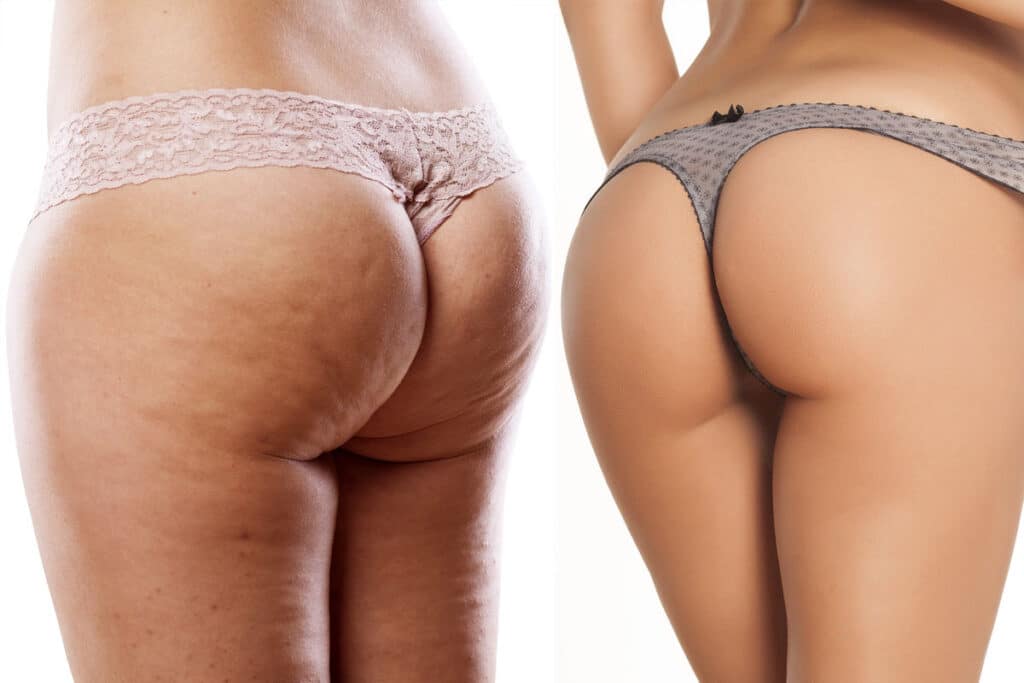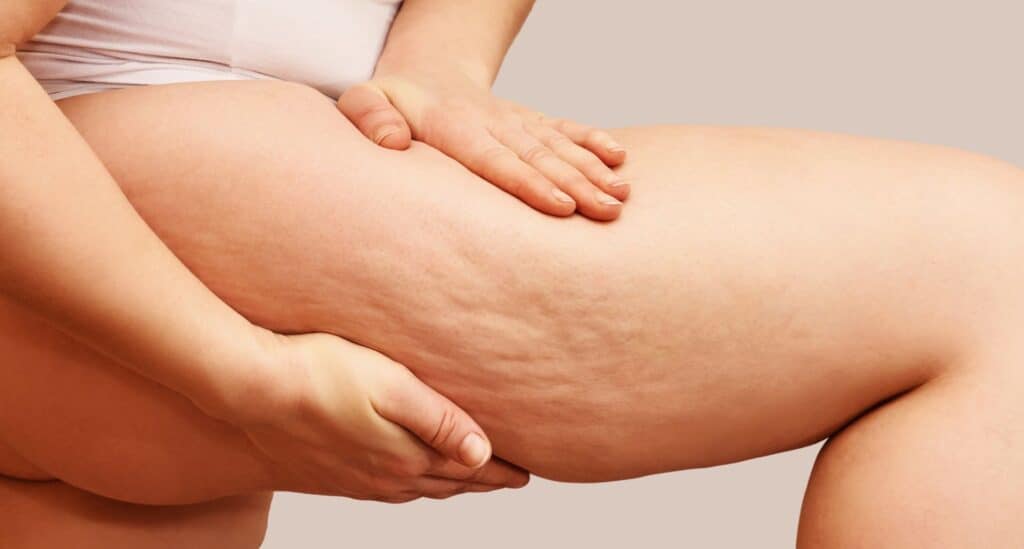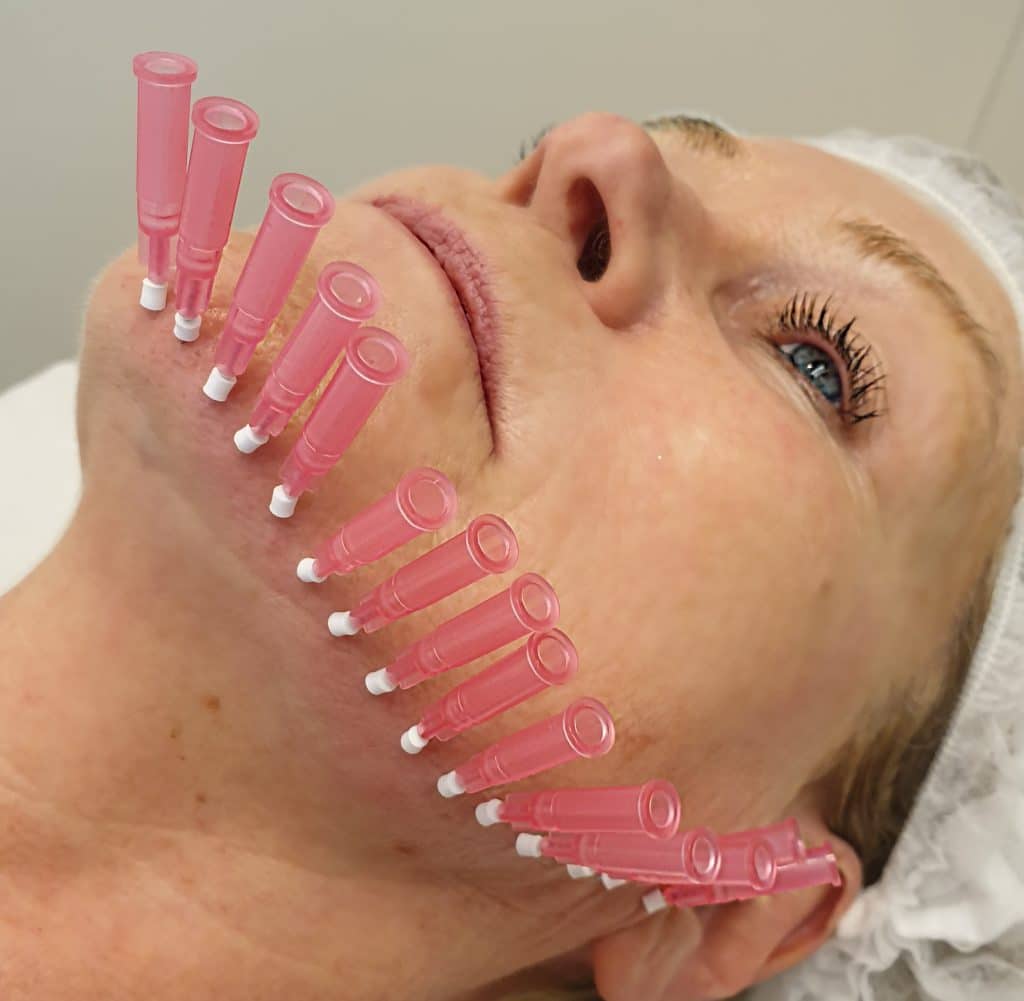The world of beauty is evolving rapidly, especially in dermal fillers. Traditional methods are giving way to innovative techniques that promise better results. Future trends in dermal fillers focus on safety, customization, and natural-looking outcomes.
New technologies are making it easier to tailor treatments to individual needs. Patients want more than just volume; they seek harmony in their appearance. The rise of biocompatible materials ensures fewer side effects and longer-lasting results. As the demand for personalized aesthetics grows, the industry must adapt. Understanding these shifts is crucial for anyone interested in cosmetic enhancements. Stay ahead of the curve and discover what’s next in this exciting field.
Key Takeaways
- Stay updated on emerging innovations in dermal fillers to make informed choices about treatments and products that best suit your needs.
- Consider fillers made from sustainable and natural materials to minimize environmental impact while enhancing your beauty.
- Explore personalized cosmetic treatments to achieve results tailored specifically to your facial structure and aesthetic goals.
- Look for modern fillers that offer long-lasting effects, reducing the frequency of touch-ups and overall costs.
- Be aware of enhanced safety measures that are being implemented in filler procedures to ensure a safer experience.
- Understand the role of AI in filler techniques, which can lead to more precise applications and better outcomes.
Emerging Innovations in Dermal Fillers
Advanced Structures
Dermal filler innovations focus on integrating advanced hyaluronic acid structures. These new formulations improve the effectiveness of dermal fillers. They enhance facial harmony by adapting better to individual skin types.
The latest hyaluronic acid fillers provide more natural results. They help maintain skin elasticity and hydration. This leads to a smoother appearance with fewer side effects. As a result, patients experience less swelling and bruising after treatment.
Facial Volume Restoration
Strategic restoration of facial volume is a key trend in dermal filler treatments. Over time, natural aging causes loss of volume in the face. Fillers address this issue by adding volume to specific areas.
This approach maintains natural contours while enhancing features. For example, cheek fillers can restore youthful fullness. Lip filler trends show similar advancements, providing plumpness without looking exaggerated. Patients appreciate the subtle enhancements that still look genuine.
Reduced Discomfort
New techniques for dermal filler injections aim to reduce discomfort during procedures. Many brands now use a combination of lidocaine with fillers. This numbing agent minimizes pain during the injection process.
Advanced application methods decrease healing time significantly. Techniques such as micro-cannula injections allow for smoother delivery of fillers. These methods lower the risk of bruising and swelling post-treatment.
Patients often report quicker recovery times with these innovations. They can return to daily activities sooner than with traditional methods. Overall, these advancements improve patient satisfaction and encourage more people to seek dermal filler treatments.
Increased Demand
The demand for dermal fillers continues to rise globally. According to industry reports, the dermal filler business is expected to grow significantly in the coming years. People are increasingly interested in non-surgical options for cosmetic enhancement.
More brands are entering the dermal filler segment, offering various products. Each brand focuses on unique benefits and targeted solutions for specific concerns. This variety allows consumers to choose what best fits their needs.
Effectiveness and Safety
The effectiveness of dermal fillers has improved due to ongoing research and development. New formulations provide longer-lasting results while maintaining safety standards. Regulatory bodies closely monitor these products to ensure they meet strict guidelines.
Patients can expect reliable outcomes from modern dermal filler procedures. The focus remains on achieving natural-looking results while minimizing risks.
Advances in Filler Technology
Longer-Lasting Results
New filler technologies focus on achieving long-lasting effects. Traditional fillers often required frequent touch-ups. Recent advancements allow for results that can last up to two years or more. These fillers use improved techniques that enhance their durability.
Practitioners now utilize advanced injection methods. They place fillers deeper into the skin layers, allowing for better integration. This technique reduces the likelihood of migration, ensuring that the filler stays where it is needed most. Patients benefit from a more stable and natural-looking enhancement.
Complex Hyaluronic Acid Structures
Filler treatments increasingly use complex hyaluronic acid structures. These structures mimic the natural composition of the skin. They integrate seamlessly with existing tissues, providing a smoother appearance.
Innovations in filler formulations include varying particle sizes. Larger particles provide volume, while smaller ones offer smoothness and flexibility. This combination allows for tailored treatments based on individual needs.
The result is a product that feels natural and moves with facial expressions. Patients notice a significant difference in comfort and aesthetic appeal.
Youthful Appearance
Advancements in filler procedures contribute to a more youthful look. Enhanced formulations restore lost volume without looking artificial. They help in reducing wrinkles and fine lines effectively.
These innovations also address specific areas of concern. For instance, fillers can contour the jawline or enhance cheek volume. As a result, patients achieve a balanced and rejuvenated appearance.
Studies show that patients are satisfied with these newer filler technologies. Many report feeling more confident after treatment. The ability to achieve natural results has changed perceptions about cosmetic enhancements.
Future Trends
The future of dermal fillers looks promising with ongoing research and development. Scientists are exploring new materials that may offer even better results. Potential innovations could lead to fillers that dissolve gradually over time, eliminating the need for removal.
Moreover, personalized treatments are on the rise. Practitioners will likely adopt more customized approaches based on individual skin types and goals. This trend ensures that every patient receives care tailored specifically to them.
Sustainable and Natural Materials
Eco-Friendly Shift
The beauty industry is seeing a significant shift towards sustainable materials. Consumers demand products that are environmentally friendly. This trend is evident in dermal fillers, where companies are exploring natural ingredients. These ingredients often come from renewable sources. They reduce the reliance on synthetic chemicals.
Many brands now prioritize eco-friendly formulations. For instance, some fillers use hyaluronic acid derived from plant sources instead of synthetic processes. This change not only appeals to eco-conscious consumers but also aligns with the growing demand for transparency in product sourcing.
Environmental Impact
Eliminating synthetic components has a notable impact on environmental sustainability. Traditional fillers often contain chemicals that can be harmful to the environment. Their production processes may generate waste and pollution. By using sustainable materials, manufacturers can reduce their carbon footprint.
For example, biodegradable fillers break down naturally over time. This reduces long-term waste in landfills. Many companies are adopting greener manufacturing practices. They focus on minimizing energy use and waste generation during production.
Mimicking Natural Properties
Using materials that mimic natural skin properties offers multiple benefits. Fillers made from natural ingredients can blend seamlessly with the skin. This results in a more youthful appearance without looking artificial.
Natural fillers often provide better hydration and elasticity. They enhance the skin’s texture and overall health. The body tends to accept these materials more readily than synthetic ones, leading to fewer side effects.
Moreover, natural fillers can stimulate collagen production. This process helps maintain skin firmness over time. Patients experience longer-lasting results without needing frequent touch-ups.
Market Trends
Market research shows a rise in consumer interest in dermal fillers made from sustainable materials. A survey conducted in 2023 revealed that 70% of respondents preferred products with eco-friendly claims. Brands that incorporate these materials are likely to see increased sales.
Regulatory bodies are also pushing for stricter guidelines on cosmetic products. They encourage manufacturers to disclose ingredient sourcing and environmental impact. This shift promotes accountability within the industry.
Personalized Cosmetic Treatments
Customization of Fillers
Dermal fillers are becoming more personalized. Each treatment can be tailored to meet individual aesthetic goals. Patients now have options that suit their unique needs. This customization helps achieve desired looks while maintaining natural beauty.
Practitioners assess facial features before making recommendations. They consider factors like skin type, age, and personal preferences. Every face is different. A skilled provider can create a plan that enhances specific areas effectively. This approach leads to smoother skin and improved facial esthetics.
Role of Skilled Practitioners
The role of skilled practitioners is crucial in cosmetic procedures. They use their expertise to tailor treatments for optimal results. These providers understand the anatomy of the face well. Knowledge of how dermal fillers interact with skin helps them avoid complications.
Practitioners also stay updated on the latest techniques and products. Continuous education allows them to offer the best options available. This ensures that patients receive safe and effective treatments. A good practitioner communicates openly with clients about their goals and concerns.
Importance of Personalized Plans
Personalized plans are essential for successful facial enhancements. Each patient has distinct features that require attention. Customized treatment plans enhance specific areas like cheeks or lips. This focus can lead to youthful skin and a refreshed appearance.
Patients benefit from having clear expectations set by their providers. Understanding how each treatment will affect their appearance builds trust. Personalization also reduces the risk of dissatisfaction with results. When patients feel involved in the process, they tend to be happier with outcomes.
Future Trends
The future of dermal fillers lies in advanced technology and techniques. Innovations may lead to even more customized solutions for clients. Providers might use 3D imaging to visualize results before treatments begin. This technology could help patients make informed decisions.
Moreover, as demand for non-invasive beauty enhancement grows, so will the variety of products available. The industry will likely see an increase in options that cater to specific needs, such as wrinkle reduction or facial rejuvenation.
Long-Lasting Effects of Modern Fillers
Filler Longevity
Modern dermal fillers have transformed the cosmetic industry. These next-generation fillers offer long-lasting effects that can enhance facial volume for extended periods. Many of these products now last up to 18 months or even longer. Traditional fillers often required frequent touch-ups, but this new technology changes that.
The ingredients in these fillers are designed to integrate better with the skin. They contain hyaluronic acid, a substance that naturally occurs in the body. This makes them less likely to be rejected and helps maintain their effectiveness over time. As a result, users experience a smoother appearance without constant maintenance.
Long-Term Effects
These advanced fillers provide more than just immediate visual improvements. They also promote long-term collagen production. This dual benefit is significant for anyone looking to combat signs of aging. The fillers not only fill in wrinkles and restore lost volume but also stimulate the skin’s natural healing processes.
Regular use of these products can lead to improved skin texture and elasticity. Over time, users may notice a reduction in volume loss and an overall rejuvenation of their skin. This makes modern fillers a smart investment for those seeking lasting results.
Lasting Outcomes
The outcomes from using modern fillers can be impressive. Patients often report high satisfaction due to the combination of immediate results and ongoing benefits. After treatment, many see a noticeable difference right away. Their faces appear fuller and more youthful almost instantly.
As time passes, the stimulation of collagen continues to work beneath the surface. This means that even as the filler gradually dissipates, the skin remains healthier and more resilient. The effects are not just superficial; they support skin rejuvenation from within.
This approach aligns well with the trend toward personalized cosmetic treatments. Patients want solutions that not only address current concerns but also improve their skin’s health over time.
Skin Rejuvenation
Fillers act as a catalyst for skin rejuvenation. They help restore volume while simultaneously enhancing the skin’s structural integrity. By boosting collagen levels, these fillers make the skin look firmer and more youthful.
Many patients find that they need fewer treatments over time due to these ongoing benefits. The synergy between immediate effects and long-term improvements makes these fillers highly effective.
Enhanced Safety Measures
Safety Advancements
Safety is a top priority in the world of dermal fillers. Recent advancements have made injectable treatments safer than ever. Hyaluronic acid fillers, for instance, are now designed with improved formulations. These enhancements reduce the risk of adverse reactions significantly.
Professionals use advanced techniques during procedures. They often employ cannulas instead of needles. This method minimizes bruising and swelling. It also lowers the chance of vascular occlusion, which can occur when filler accidentally enters a blood vessel.
Improvements in Skin Elasticity
Improvements in skin elasticity are notable with modern fillers. These products not only add volume but also stimulate collagen production. This leads to healthier, more resilient skin over time. Patients experience a natural enhancement in their appearance.
The convenience of these procedures adds to their appeal. Many patients seek quick solutions for facial volume loss. Treatments can often be completed in under an hour. Results appear almost immediately, making them attractive for those with busy schedules.

Role of Safety in Acceptance
Safety plays a crucial role in the acceptance of dermal fillers. As people become more informed about these procedures, they appreciate the benefits. The reduction in side effects has led to increased trust among patients.
Professionals emphasize post-care instructions to ensure safety. Proper care after treatment helps maintain results and minimize risks. Patients learn how to care for their skin effectively after receiving fillers.
This focus on safety and care encourages more individuals to consider these treatments. People feel more confident about enhancing their features when they understand the steps taken to ensure their well-being.
Key Benefits
- Reduced Risks: Advanced formulations decrease the likelihood of complications.
- Natural Results: Improved elasticity provides a more youthful appearance.
- Quick Procedures: Most treatments take less than an hour.
- Informed Choices: Patients receive detailed information about aftercare.
Versatile Applications in Aesthetics
Diverse Uses
Dermal fillers have expanded their role beyond traditional facial enhancements. Practitioners now use these products for various aesthetic procedures. Fillers can reshape the nose and enhance the lips. They also improve skin texture and volume in areas like the hands and décolletage. This versatility allows patients to achieve a more youthful appearance across different body parts.
Regenerative aesthetics is another emerging trend. Fillers stimulate collagen production, promoting skin rejuvenation. This approach focuses on enhancing natural beauty rather than creating dramatic changes. Patients increasingly seek subtle enhancements that maintain their unique features.
Body Contouring
Body contouring is gaining popularity as a non-surgical option. Fillers help define contours in areas like the buttocks and thighs. The results can be immediate, making it an attractive choice for many. Patients appreciate the ability to avoid invasive surgery while achieving their goals.
In 2020, a study showed that non-surgical body contouring procedures grew by 15%. This trend reflects a shift towards less invasive options in aesthetic medicine. Many individuals prefer quick recovery times and minimal downtime associated with these treatments.
Medical Conditions
Fillers also have potential uses in treating medical conditions. They can address scars, asymmetries, and other imperfections. For instance, practitioners use fillers to improve the appearance of acne scars. Patients often report higher satisfaction levels after these treatments.
Asymmetries are another area where dermal fillers shine. They can balance facial features effectively without surgery. This application demonstrates the growing acceptance of fillers in both aesthetics and medical fields.
The innovative use of fillers shows promise for future trends in beauty and health. As research continues, more applications may arise, broadening their scope even further.
Emerging Trends
Emerging trends indicate a shift in how people view aesthetic enhancements. Many individuals prioritize natural results over exaggerated appearances. Practitioners must adapt to these changing preferences by offering tailored plans for each patient.
The rise of social media influences these trends as well. People share their experiences online, impacting choices in aesthetic procedures. Transparency about results becomes crucial for building trust between practitioners and patients.
AI in Filler Techniques
Optimizing Techniques
Artificial intelligence plays a significant role in optimizing filler application techniques. Algorithms analyze vast amounts of data from previous procedures. They can identify patterns that lead to better results. This leads to more consistent outcomes for patients.
Clinicians can use AI systems to assist in selecting the right filler and technique for each individual. For example, AI can recommend specific injection sites based on facial anatomy and desired results. This technology helps reduce human error during procedures.
Predicting Outcomes
AI has the potential to predict patient outcomes with greater accuracy. Machine learning models assess patient data, including age, skin type, and previous treatments. These models can forecast how a patient will respond to specific fillers.
This ability allows practitioners to customize treatments. Personalized plans can enhance patient satisfaction. Patients receive tailored experiences that meet their unique needs.
Enhancing Precision
Precision is crucial in cosmetic procedures. AI enhances this precision by providing real-time feedback during injections. Advanced imaging technologies combined with AI can map facial structures accurately.
Practitioners can visualize the effects of fillers before applying them. This visualization helps ensure that the application matches the patient’s expectations. Enhanced precision minimizes complications and improves overall safety.
Efficiency in Procedures
AI also boosts efficiency in cosmetic procedures. Automated systems streamline administrative tasks like scheduling and record-keeping. This allows professionals to focus more on patient care rather than paperwork.
AI can assist in training new practitioners. Simulated environments provide hands-on experience without risk to real patients. Trainees gain confidence and skills faster through these advanced training methods.
Future Developments
The future holds exciting developments for AI in dermal fillers. Continuous advancements in technology will likely lead to even more sophisticated applications. Researchers are exploring deep learning techniques to improve predictive models further.
Moreover, integrating AI with augmented reality could revolutionize how fillers are applied. Practitioners might use AR glasses that overlay digital information onto a patient’s face during procedures. This integration would enhance understanding and execution of techniques.
Understanding Regulatory Standards
Importance of Regulations
Regulatory standards play a crucial role in the production of dermal fillers. These rules ensure that products meet safety and quality requirements. Manufacturers must follow strict guidelines to protect consumers. The Food and Drug Administration (FDA) in the United States oversees these regulations. They evaluate fillers before they reach the market. This process includes clinical trials to assess safety and effectiveness.
Adhering to these standards helps prevent harmful reactions. For instance, improper formulations can lead to complications like infections or allergic reactions. Consumers need assurance that the products they use are safe. Regulations build this trust by providing oversight and accountability.
Impact on Safety and Trust
Regulations directly impact product safety and consumer trust. When companies comply with the rules, they demonstrate commitment to quality. This compliance reassures individuals about the safety of their choices. According to a 2020 survey by the American Society of Plastic Surgeons, 70% of respondents consider FDA approval important when selecting dermal fillers.
Safety incidents can erode public confidence. High-profile cases of adverse reactions have raised concerns in recent years. These incidents highlight the need for stringent regulatory measures. As a result, ongoing monitoring and reporting are vital for maintaining safety standards.
Role of Research and Compliance
Ongoing research is essential for advancing filler technologies. Researchers continuously study new materials and techniques. This exploration aims to improve efficacy and minimize side effects. Compliance with regulations ensures that new findings translate into safe products.
For example, hyaluronic acid fillers have evolved significantly due to scientific advancements. Researchers have developed longer-lasting formulations while maintaining safety profiles. Regulatory bodies review these innovations carefully before approval.
Manufacturers also invest in training programs for practitioners. Knowledgeable professionals can administer fillers safely and effectively. Proper training reduces risks associated with improper application techniques.
Future Considerations
Looking ahead, regulatory frameworks may adapt to emerging trends in dermal fillers. Innovations such as biocompatible materials or gene therapy could reshape the industry. Regulatory bodies will need to stay informed about these changes.
Consumer education remains vital in this evolving landscape. Individuals should understand what regulations mean for their choices in dermal fillers. Knowledge empowers them to make informed decisions about treatments.
Final Remarks
The future of dermal fillers is bright and full of exciting possibilities. Innovations like sustainable materials and personalized treatments are changing the game. You can look forward to safer options with longer-lasting effects that cater to your unique needs. The integration of AI in filler techniques ensures precision and effectiveness, making your experience even better.
Now’s the time to stay informed and embrace these trends. Explore your options, consult with experts, and consider how these advancements can enhance your aesthetic journey. Your beauty goals are just a step away. Don’t miss out on what’s next in dermal fillers—be proactive and take charge of your aesthetic future!
Frequently Asked Questions
What are the latest innovations in dermal fillers?
Emerging innovations in dermal fillers include advanced formulations that enhance longevity and safety. New technologies focus on biocompatibility and reduced side effects, ensuring a more natural look.
How have filler technologies advanced recently?
Recent advancements involve the development of cross-linked hyaluronic acid and other materials that improve texture and volume retention. These innovations lead to smoother applications and better results.
Are there sustainable options for dermal fillers?
Yes, many brands are now offering sustainable and natural material options for dermal fillers. These products minimize environmental impact while providing effective aesthetic results.
How do personalized treatments work in dermal fillers?
Personalized treatments analyze individual skin characteristics, goals, and anatomy. This approach ensures tailored solutions that yield optimal results, enhancing patient satisfaction.
What is the duration of modern dermal fillers?
Modern fillers can last from six months to two years, depending on the type used and individual metabolism. Long-lasting formulas reduce the need for frequent touch-ups.
What safety measures are being implemented in filler procedures?
Enhanced safety measures include rigorous testing of filler materials, improved injection techniques, and comprehensive training for practitioners. These steps ensure safer experiences for patients.
How is AI influencing filler techniques?
AI is revolutionizing filler techniques by optimizing treatment planning and predicting outcomes. It allows practitioners to customize approaches based on data-driven insights, improving overall effectiveness.











